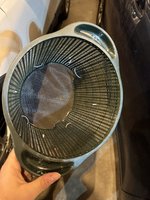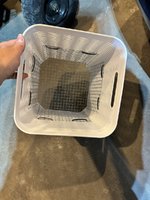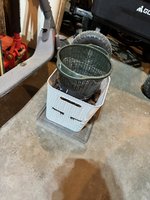FiggieSmalls
Yamadori
Hey folks!
I hope I'm not in the wrong forum here. This post is really a question about growing big bonsai from starter material without a good backyard to grow it in. So it is about pots in that sense, but not about pots in the decorative sense.
I'm having some trouble finding a lot of information on this topic. It seems like growing trees in the field/ground is decidedly the best way to accelerate growth vs. growing in a pot. But sometimes, growing the tree in a pot is the only option.
So the question really is, how can we give trees a potted environment that most closely approximates the field in terms of fast growth?
It seems obvious that you would want to just use a really large pot. Preferrably something very wide and somewhat shallow. I'm thinking something 6-12 inches deep and 2-3ft long/wide. But I'm not seeing any products like this when I search online, making me wonder if I'm being crazy...
I've thought about just getting a big plastic tub, drilling holes in the bottom, and then filling it halfway with gravel, putting mesh lining above the gravel, and then place the tree and soil above the mesh.
Another possibility I've considered is to use a big 10+ gallon fabric pot. In theory this gets around the issue of circling roots. Does anyone have experience using large fabric pots to develop trees?
All suggestions are much appreciated, thank you!
Figgie
I hope I'm not in the wrong forum here. This post is really a question about growing big bonsai from starter material without a good backyard to grow it in. So it is about pots in that sense, but not about pots in the decorative sense.
I'm having some trouble finding a lot of information on this topic. It seems like growing trees in the field/ground is decidedly the best way to accelerate growth vs. growing in a pot. But sometimes, growing the tree in a pot is the only option.
So the question really is, how can we give trees a potted environment that most closely approximates the field in terms of fast growth?
It seems obvious that you would want to just use a really large pot. Preferrably something very wide and somewhat shallow. I'm thinking something 6-12 inches deep and 2-3ft long/wide. But I'm not seeing any products like this when I search online, making me wonder if I'm being crazy...
I've thought about just getting a big plastic tub, drilling holes in the bottom, and then filling it halfway with gravel, putting mesh lining above the gravel, and then place the tree and soil above the mesh.
Another possibility I've considered is to use a big 10+ gallon fabric pot. In theory this gets around the issue of circling roots. Does anyone have experience using large fabric pots to develop trees?
All suggestions are much appreciated, thank you!
Figgie








